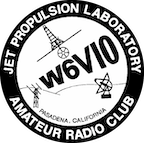The Internet and Amateur Radio
 As it’s name implies, the Internet Radio Linking Project makes use of the Internet as a communications backbone to facilitate Amateur Radio communications. By enabling our repeater with this technology, we can provide instant, on-demand connections with one or more repeaters worldwide. The Internet Radio Linking Project (IRLP) allows amateurs to link radio systems separated by long distance without the use of expensive leased lines, satellites, or controllers.
As it’s name implies, the Internet Radio Linking Project makes use of the Internet as a communications backbone to facilitate Amateur Radio communications. By enabling our repeater with this technology, we can provide instant, on-demand connections with one or more repeaters worldwide. The Internet Radio Linking Project (IRLP) allows amateurs to link radio systems separated by long distance without the use of expensive leased lines, satellites, or controllers.
IRLP allows communications using your HT, mobile or base FM transceiver to any location in the world that has an IRLP node.
All local (and linked) users will be able to participate in an IRLP QSO via the Internet to any place in the world where a node exists through a reflector (a group, or party line) or node-to-node (single point-to-point) connection.
Please read our operating guidelines for use of our IRLP node. For our public IRLP DTMF control codes, please visit the control codes page.
IRLP is the brainchild of Dave Cameron, VE7LTD of Vancouver BC. IRLP is the abbreviation used for the Internet Radio Linking Project which Dave developed over the past several years. In 1998 Dave became frustrated with the unreliable operation of the Windows based Voice over IP software. All Windows based amateur linking software used VOX and were not secure from non-amateur access. The IRLP network uses a digital switching concept and produces an instant and secure link between licensed repeaters around the world. The hardware and software is constantly being upgraded and enhanced with new features.
But is it DX?
No not really, it doesn’t have the challenge of sending your signal around the world! It is often referred to as “armchair DX” because it’s so easy. However it is not DX by any of the traditional definitions. While you may have conversations with stations around the world, your radio signal is only traveling as far as the local repeater. Contacts made do not qualify for any awards or Field Day with the ARRL. Most stations will not send QSL’s for IRLP contacts, although some are using electronic QSL’s (visit http://eqsl.net). Although not DX, it has some of the flavor of working DX! You may be talking with stations in different countries, time zones or hemispheres. It simply is a way to expand the repeater’s reach using the Internet. So if you like to ragchew while on the repeater, this is a way to reach more hams. So please put this in perspective and enjoy it for what it is!
IRLP versus other linking systems
Unlike some systems that allow users access from a PC with minimal if any security, IRLP uses a 100% authentication system (PGP) to assure the connecting nodes are authenticated and authorized to transmit on the amateur bands. This provides security from hackers and non-amateur PC access. Although the IRLP uses the Internet., radio activity is maximized because the philosophy behind IRLP requires a radio as an entry and exit point to the system.
There are other systems that can be used to link Amateur Radio operators using Internet. Voice over IP technology.
IRLP has a different implementation philosophy from other Internet linking systems.
Similarities and differences between IRLP and other systems
| IRLP | Others |
|---|---|
|
|
|
|
Using CTCSS/COS signalling instead of VOX is one of the greatest inovations used by IRLP. This was really driven home during the second 911 Comemorative Net where all the EchoLink nodes kept the links tied up by ping-ponging back and forth whenever a node was unkeyed. Even during the hurricane watch, an operator had to ride herd on the EchoLink nodes to keep them from causing the net to collapse under the weight of the ping-ponging nodes. EchoLink is a very popular mode but this one fundamental flaw make it less than desriable for repeater linking.
It is our opinion that the nature of the IRLP system, where a radio must be used at both ends of the contact, helps promote Amateur Radio. No computer, special equipment or software is required by the end-users, all you need is a radio! The fact that it runs on a more reliable operating system was key in our choice of the IRLP system.
It should be noted that AllStarLink is a relative newcomer to the world of VoIP systems. AllStarLink is based upon the Asterisk PBX software and allows the connection remote bases, but also allows the connection to the telephone network for both dial-in and dial-out via a cellphone. It is hoped that one day, the JPLARC will implement an AllStarLink node.
Other Internet linking systems include AllStarLink, EchoLink.
To learn more click on a link : IRLP | AllStarLink | EchoLink
